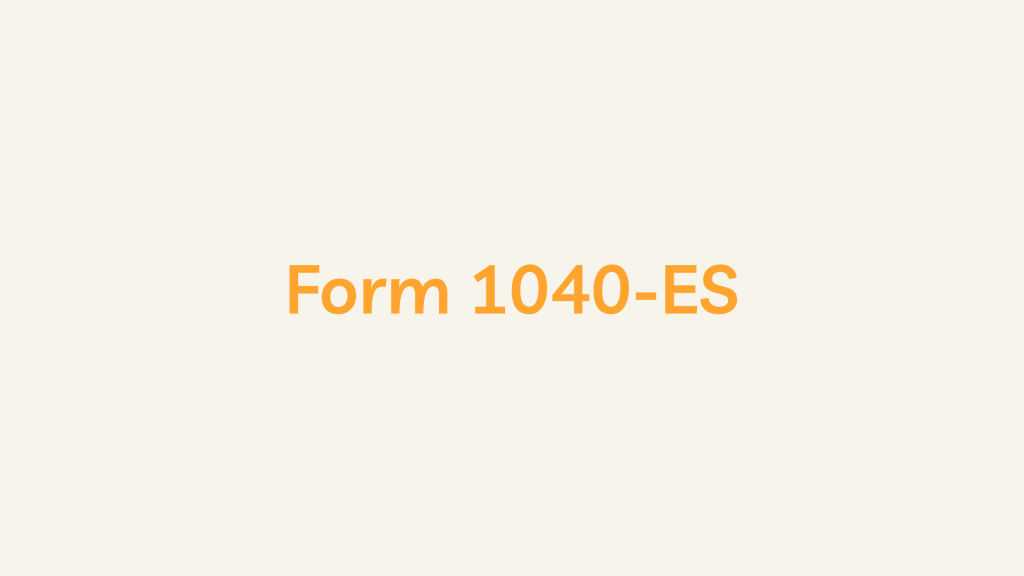What is Form 1040-ES?
Form 1040-ES is the Estimated Tax for Individuals form issued by the Internal Revenue Service (IRS) in the United States. This form is used by individuals who expect to owe taxes of $1,000 or more when they file their annual income tax return and who meet certain other criteria. The purpose of Form 1040-ES is to help taxpayers calculate and pay their estimated tax liability throughout the year.
Download Form
Key Components
- Taxpayer Information:
- Taxpayers provide their name, Social Security Number (SSN), address, and filing status.
- Income Estimate:
- Taxpayers estimate their total annual income, including wages, self-employment income, dividends, interest, and other sources.
- Adjustments to Income:
- Taxpayers can deduct certain adjustments to income, such as contributions to retirement accounts or student loan interest.
- Taxable Income:
- Calculate the estimated taxable income by subtracting adjustments from the estimated total income.
- Tax Computation:
- Determine the estimated tax liability by applying the appropriate tax rates to the taxable income.
- Credits and Payments:
- Consider any tax credits and payments, such as withholding from wages or other credits, to calculate the net estimated tax liability.
- Required Annual Payment:
- Determine the required annual payment, which is generally the lesser of 90% of the current year’s tax liability or 100% (110% for higher-income taxpayers) of the previous year’s tax liability.
- Quarterly Payment Schedule:
- The form provides a schedule for making quarterly estimated tax payments. It includes due dates and payment vouchers for each quarter.
How to Use Form
- Estimate Income:
- Estimate your total annual income, considering wages, self-employment income, and other sources.
- Deduct Adjustments:
- Identify and deduct any adjustments to income, such as contributions to retirement accounts or self-employment expenses.
- Calculate Taxable Income:
- Subtract adjustments from the estimated total income to determine your taxable income.
- Compute Estimated Tax Liability:
- Use the tax rates provided by the IRS to calculate your estimated tax liability based on the taxable income.
- Determine Required Annual Payment:
- Calculate the required annual payment, considering the 90% of current year’s tax or 100% (110% for higher-income taxpayers) of the previous year’s tax.
- Quarterly Payments:
- Follow the quarterly payment schedule provided on the form to make timely estimated tax payments. Payments are typically due in April, June, September, and January.
- Complete Payment Vouchers:
- Attach the appropriate payment voucher to each quarterly payment to ensure proper crediting of the payment to your account.
- File by the Due Date:
- File Form 1040-ES and make the quarterly payments by the due dates to avoid penalties and interest.
- Adjustments as Needed:
- Adjust your estimated tax payments accordingly if your income or deductions change during the year.
Conclusion
Form 1040-ES is an essential tool for individuals with income not subject to withholding, such as self-employed individuals or those with significant investment income. It helps taxpayers meet their annual tax obligations and avoid underpayment penalties. Taxpayers should review the instructions provided by the IRS for Form 1040-ES for detailed guidance on completing the form and making accurate quarterly payments.
